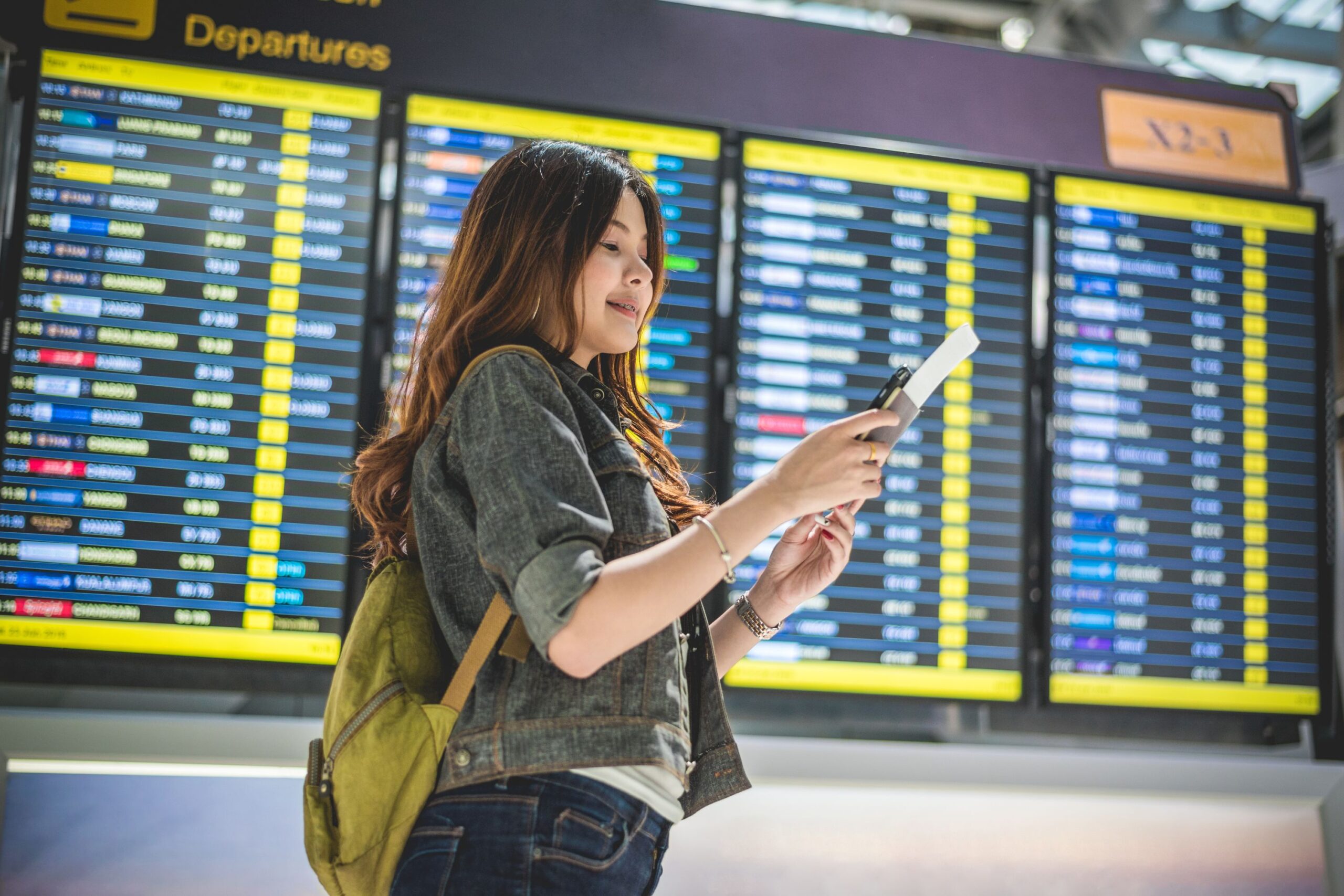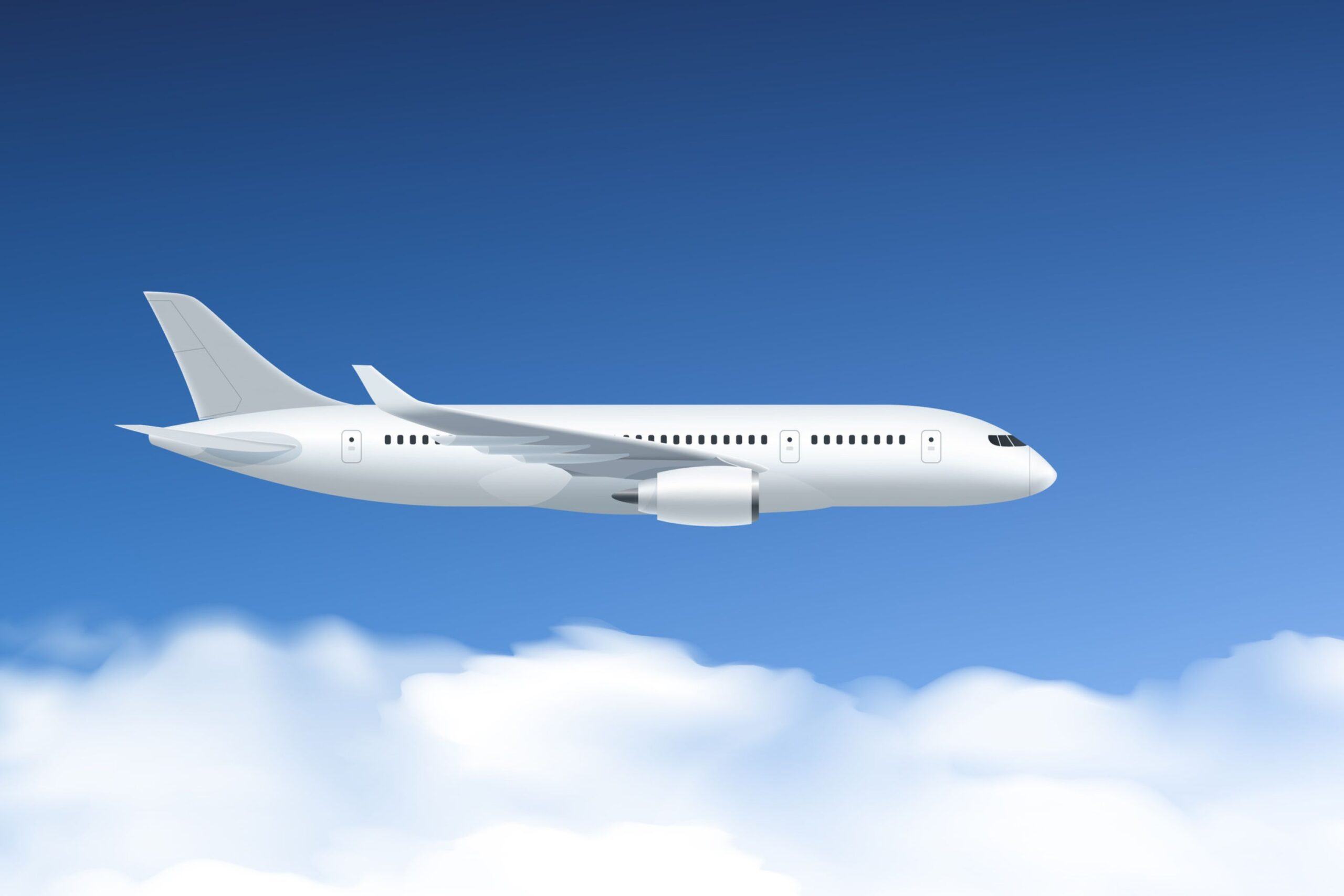Frequent flyer miles are more than just a reward for anyone who travels by air—they’re a tool. A way to make your travel habits work for you. If you’re wondering how they function or how to start earning them without flying across the globe every month, you’re not alone.
Airlines created frequent-flyer programs to reward loyalty. The more you fly, the more you earn. But here’s the twist—earning miles isn’t just about booking flights anymore. There are dozens of ways to build your mileage account, many of which don’t require setting foot in an airport.
What Are Frequent Flyer Miles?
Frequent-flyer miles are travel currency. Each mile (or point, depending on the airline) represents a unit of value that can be exchanged for flight tickets, upgrades, lounge access, or even non-travel-related perks like hotel stays and shopping discounts. The key is to understand how each airline calculates and values these miles.
Some carriers award miles based on how far you fly, while others focus on how much you spend. For example, a 500-mile flight with a budget airline may earn you fewer miles than a shorter flight with a premium fare on a legacy carrier.
If you travel often—or even just a couple of times a year—you’ll want to be enrolled in a frequent flyer program. They’re free to join, and those miles will quietly build up in the background each time you book a flight.
How to Earn Frequent Flyer Miles Without Flying
Believe it or not, some of the most dedicated mileage collectors rarely fly. Airlines have partnered with banks, hotels, car rental companies, and online retailers to allow travelers to earn miles from everyday purchases. Here’s how you can get started:
Airline-Branded Credit Cards
One of the fastest ways to accumulate miles is by using an airline-branded credit card. These cards offer miles on every dollar you spend, with bonus miles on purchases like airfare or dining. If you’re planning a considerable expense or a trip shortly, a sign-up bonus from one of these cards could cover a free ticket entirely.
Hotel and Rental Car Partners
When booking a hotel or renting a car through one airline’s partners, you can earn miles instead of standard reward points. It’s a simple setting you can enable during booking and adds up quickly.
Online Shopping Portals
Most major airlines have shopping portals that let you earn miles by clicking through their site before purchasing at popular retailers. Think of it like getting a cash-back rebate, except the reward is in travel miles.
If you’re already shopping online, there’s no reason not to earn something valuable.
Booking Flights to Maximize Miles
Now, let’s talk flights—because that’s what your miles were made for. Booking flights to earn the most miles is part strategy and part timing.
When flying with a preferred airline, always log in to your frequent flyer account before booking. That’s the only way the system knows where to credit your miles. Some travelers forget this step, which means missing out on rewards for the entire trip.
Also, consider booking flights directly through the airline’s website. Third-party platforms might save you a few dollars upfront, but in many cases, they won’t award full miles—or any at all. Direct booking is worth the extra cost if you aim to build a mileage bank.
Tip for Travelers Who Fly Less Often
If you only take one or two flights a year, don’t ignore the benefits of a frequent flyer program. Even occasional travelers can benefit, mainly if you focus on one airline or alliance. Many programs let you extend the life of your miles through small activities like surveys, dining programs, or shopping.
Even if your account sits untouched for a while, you can preserve those miles for a future vacation.
The Value of Frequent Flyer Miles
You might be asking: How much is a frequent flyer mile worth? The answer varies. On average, one mile is worth about 1–2 cents when redeemed for a standard economy flight. But you can increase that value with business-class upgrades, last-minute redemptions, or international bookings.
For example, using 70,000 miles for a $1,200 business-class flight gives you far more value than spending 25,000 miles on a $200 domestic trip.
The trick is to calculate what each redemption is giving you in return. If you’re getting more than 1.5 cents per mile, that’s a solid deal.
How to Redeem Frequent Flyer Miles for Flights
You’re not alone if you’ve been earning miles and wondering when or how to use them. Many travelers collect miles but hesitate to redeem them because they’re unsure how it works or don’t want to waste them on a low-value ticket. The good news? Once you know what to look for, redeeming frequent flyer miles is easier than you might think.
When logged into your frequent flyer account, most airline websites allow you to search for flights using miles instead of cash. The available seats are marked as “Saver” or “Award” fares. These are the sweet spots—the ones that let you stretch your miles the furthest.
Flexibility Pays Off
If you’re flexible with your travel dates or destination, you’ll often unlock better redemption rates. For instance, flying midweek or during the off-season might cost 30–40% fewer miles than a flight around a holiday. Depending on the airline’s offers, you can also mix miles and cash for better value.
Sometimes you’ll see a flight that requires a sky-high number of miles. That doesn’t mean your miles are worthless—it just means there aren’t many reward seats left. If you’re set on flying for free, try searching earlier or tweaking your itinerary.
Booking International Travel with Miles
Long-haul flights are often the best value when redeeming frequent flyer miles. For example, a business class seat from New York to Paris might cost $3,000 in cash, but could be booked for 70,000 miles and a small surcharge. That’s a powerful exchange rate.
Also, some international carriers partner with U.S. airlines, meaning you can use your miles on their flights, even if you’ve never flown that airline. These partnerships expand your options and make frequent-flyer miles far more versatile than they first appear.
Airline Alliances: One Membership, Many Options
You’re collecting miles with one airline, but another operates the flight you want. Don’t panic. You can use your miles across both carriers if they’re part of the same airline alliance.
There are three main alliances: Star Alliance, SkyTeam, and Oneworld. Between them, they cover most of the world’s airlines.
When you stick to one alliance, your miles go further. You earn on one carrier, redeem on another, and still benefit from priority check-in, lounge access, or waived baggage fees—all because of your frequent flyer status.
If you fly with different airlines within the same alliance, that’s precisely how you should play the game.
Tip for Alliance Travelers
Before you book, always check which partner offers the better redemption rate. For example, using miles from Airline A on Airline B’s flight might cost fewer miles than if you booked it through Airline B directly. It takes a bit of research, but it’s one of the most innovative ways to save big.
Do Frequent Flyer Miles Expire?
Here’s something that trips up even seasoned travelers—yes, frequent flyer miles can expire. And if you’re not paying attention, you could lose thousands of them for no good reason.
Each airline has its expiration policy. Some give you 18 months of inactivity before your miles disappear. Others offer rolling expiration based on your account activity. And a few premium programs keep your miles alive indefinitely, as long as you’re a cardholder or elite member.
What can you do? Set calendar reminders or use a free mileage tracker app. Even a small action, like dining at a partner restaurant or buying a magazine subscription through your airline portal, can reset the clock on your miles.
If you plan to travel again, keeping those miles active is worth the tiny effort.
Elite Status and Frequent Flyer Miles: What’s the Connection?
When travelers talk about elite status, they usually refer to loyalty tiers within a frequent flyer program. This status isn’t just for show—it can seriously boost your travel experience and help you earn more miles, faster.
Most airline loyalty programs offer multiple levels: basic, silver, gold, and platinum (or similar names, depending on the airline). The higher your status, the more perks you unlock. But here’s where it gets interesting—elite members usually earn bonus miles on every flight. So, the same trip might earn a standard member 1,000 miles and an elite member 1,500 or more.
Why Elite Status Matters for Frequent Flyers
Elite travelers often receive upgrades to premium economy or business class, early boarding, free checked bags, and access to airport lounges. These perks can dramatically improve your travel experience, especially if you fly often.
But the real long-term advantage? Accelerated mile accumulation. That means free flights come faster, and redemption becomes more flexible. Working toward elite status pays off over time if you regularly book flights for business or leisure.
Tip for Occasional Travelers
You don’t need to chase elite status blindly. If you’re not flying enough to hit the thresholds naturally, consider focusing your flights on one airline or alliance. That way, any miles you earn stay in one place, and you’ll get closer to qualifying for benefits that make your future trips smoother.
Transferring Miles Between Accounts: Is It Worth It?
Some travelers ask if they can combine frequent flyer miles with a friend or family member. The answer? Sometimes yes, but with limits.
Most airlines allow mileage transfers between accounts, but they charge a fee per mile transferred, plus a transaction fee. If you’re trying to top off an account for a reward flight, it might be worth the cost—but in most cases, it’s better to avoid transferring miles unless it’s your only option.
Instead, you can book award flights for someone else using your miles. Many airlines allow this, and it’s free. You’ll enter their name during the booking process, and the ticket is issued just like it would be for you.
This option benefits parents booking travel for kids or couples planning trips using a shared mileage balance.
Watching for Frequent Flyer Promotions
Airlines run mileage promotions all the time, and they’re one of the best ways to earn extra frequent flyer miles without doing much more than you already are.
Sometimes it’s a bonus for booking a flight to a specific destination. Other times, it might be a partnership with a hotel chain or a dining program offering double miles. The trick is to stay in the loop.
If you’re serious about earning, subscribe to your airline’s newsletter and watch their “offers” page. These deals are often time-sensitive, but they can make a big difference. For instance, a double-mile promotion on a $500 flight could mean 2,000 miles instead of 1,000—and that’s not nothing.
Booking Flights for Others Using Frequent Flyer Miles
You’re not planning to fly anytime soon, but a friend or family member is. Don’t let your miles sit unused. One of the most underrated features of frequent flyer programs is the ability to book award flights for someone else. You don’t need to transfer your miles—you need their name and travel details.
When you book a flight using miles, most airline systems let you choose the passenger’s name at checkout. That means you can gift a trip, cover part of a journey for a group vacation, or help someone get home in an emergency.
If your travel plans are on hold, it’s one of the best ways to get value out of your miles.
Things to Keep in Mind
Airlines still apply the same rules—award availability, taxes, and fees are all based on the itinerary and class of service. Some programs might restrict how often you can book flights for others, especially internationally. Always double-check the fine print before confirming.
Should You Buy Frequent Flyer Miles?
Every major airline offers the option to buy miles. It sounds convenient—especially if you’re just a few thousand short of a reward flight. But is it worth it?
In most cases, buying miles isn’t the best move unless a sale or promotion is running. You’ll often pay more per mile than its redemption value. For example, you might spend $300 to buy 15,000 miles, but those miles might only get you a flight worth $200.
When It Makes Sense
If you’re booking a last-minute international ticket and need to top off your account by a small amount—say, 5,000 miles—it might be cheaper to buy those miles than pay cash for the entire flight. But always compare the numbers. If the purchase price of miles exceeds the cost of a regular fare, skip it.
Another time buying miles makes sense is during limited-time promotions, when airlines offer 40% or 50% bonus miles. In those cases, the value can swing in your favor—but only if you already have a use in mind for them.
Using Miles Beyond Flights
While flights offer the best return on your frequent flyer miles, many airlines allow you to redeem miles in other ways. That includes:
- Upgrades to premium seats
- Lounge access passes
- Hotel stays and car rentals.
- Shopping for merchandise or gift cards
It’s important to know that these non-flight redemptions often provide lower value. A $100 gift card might cost 15,000 miles, while the same number of miles could book a flight worth $200. If you’re chasing value, always check flight redemptions first.
But in some cases—like when your miles are about to expire or you’re just shy of a ticket—it makes sense to use them on something instead of losing them entirely.
How to Track and Manage Your Frequent Flyer Miles
If you’ve enrolled in more than one frequent flyer program—or have miles scattered across airlines, hotel partners, and cards—keeping track of everything can feel like a job. That’s where a bit of organization comes in.
The easiest way to manage your frequent flyer miles is using a mileage tracking tool. Popular apps and websites let you sync your loyalty accounts in one dashboard. That way, you’ll always know how many miles you have, when they expire, and where you’re closest to a free flight.
Keep Your Account Active
One mistake people make is letting miles expire simply because they forgot the account exists. Even a small activity, like using a shopping portal or making a $10 credit card purchase, can keep your account in good standing. The more active you are, the less likely your miles will disappear without warning.
If you’re signed up for multiple airline programs but only actively fly with one or two, set reminders or organize your login credentials in a secure app. The time investment is minimal, and the rewards are real.
Using Frequent Flyer Miles Strategically
The more you travel, the more options you’ll have to use your miles—but even occasional flyers can benefit when they plan. You don’t need elite status to get a free flight. You need consistency, awareness of partner perks, and the habit of always earning miles on your bookings.
Make it second nature. Every time you book a flight, check if you’re logged into your frequent flyer account. Every time you make a big purchase, consider using a travel credit card that rewards you with miles.
If you’re not using your frequent flyer miles, someone else is flying for free while you’re still paying full price.
FAQs
What’s the difference between frequent flyer miles and credit card points?
Frequent flyer miles are awarded by airlines, while banks give credit card points. However, many credit cards allow you to transfer points to frequent flyer programs.
Can I use miles for someone else’s flight?
Yes. Most airlines allow you to book award tickets for other people using your miles, without transferring them.
How long do frequent flyer miles last?
It depends on the airline. Some expire after 12–24 months of inactivity, while others never expire if you keep your account active.
Is it worth buying frequent-flyer miles?
Only in specific situations. For example, topping off an account for a high-value redemption or during a bonus miles promotion.
Can I earn miles on discounted or basic economy tickets?
Usually yes, but the miles earned are often lower than higher fare classes.
Do all airlines belong to an alliance?
No. While many airlines are part of an alliance like Star Alliance, SkyTeam, or Oneworld, some operate independently.
How do I find the best value for redeeming my miles?
Compare the ticket price in dollars vs. miles. Aim for at least 1.4–1.5 cents per mile for a good deal.




